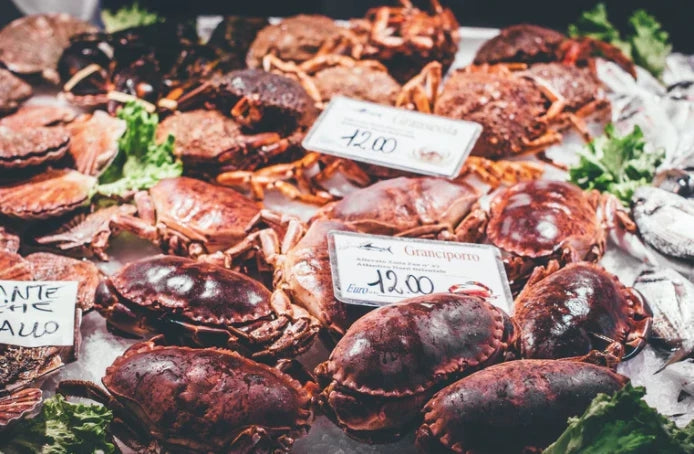
As public opinion increasingly tends towards sustainability, our habits are changing. Cutting our consumption of intensively-farmed meat products and the maintenance of our natural environment, more and more of us are casting around for sustainable alternatives.
When it comes to seafood, people are increasingly prioritizing quality over quantity. Consequently, sustainably-fished fresh crab and lobster from British waters is gradually hitting the mainstream.
However, in Britain, we don’t quite eat crab and lobster as much or as often as in other parts of Europe — and where it is consumed, it’s often as a rare treat from a restaurant. As a result, a significant chunk of Britons aren’t clued-up on crab and lobster preparation. That’s where this article comes in.
If you’re looking to learn how to prepare fresh, whole crab or lobster with a minimum of fuss, faff or emergency googling, you’ve come to the right place! Read on for Zyliss' guide, and to find out about our handy range of seafood tools.
How to cook crab

Preparing a crab yourself is much cheaper than buying prepared meat, and usually tastes far superior. If you’re cooking your crab at home, do so by bringing a large pan of salted water to the boil and simmering the whole crab for approximately 12 minutes per kilogram. It’s best to work out how long your crab needs in advance, to avoid confusion!
Once it’s done, leave it to cool for a while in the water. Then, transfer it to a plate and cool it completely in the fridge — the meat is far easier to get at when the crab is completely cooled.
How to prepare crab at home

After that, lay the crab out on a large chopping board. You’ll need a couple of bowls, a large sharp knife and a seafood pick. For removing parts or cracking the crab’s shell, you’ll need either a blunt, heavy object like a rolling pin or a pair of our brilliant multi-purpose shellfish shears.
First, twist off the legs and claws and set them to one side. Then, from the front with your thumbs, push the crab’s body away from its hard carapace. This should expose the main part of the quality crabmeat, as well as displaying the “dead man’s fingers” – the crab’s feathery gills – which should be removed.
With a teaspoon, spoon out the meat in the crab’s shell into one of your bowls. This is called the “brown meat”, and is fatty and richly flavoured. Next, use your large knife to carefully cut the crab’s softer body in half. Then, use your seafood pick to get every last morsel of the “white” meat out of each half, adding it to your other bowl.
Twist the legs back on themselves at the middle joint to expose more white meat inside, which you should remove with a pick. Do the same to the arms, discarding the cartilage from the middle of the arms and legs, before carefully cracking the claws either with a heavy object or the claw-cracker function of Zyliss’ shellfish shears. Remove the last of the meat.
Check both bowls for pieces of shell before you use the meat, then carry on with your recipe!
How to cook lobster

Lobsters live in abundance in British waters and are available all year long. When cooking a lobster, carefully kill it beforehand with a sturdy knife pushed hard through the cross on the back of its head. Then, drop it into a pan of boiling water, cooking for approximately four minutes until the shell turns a bright red. You can also barbecue lobster, which takes about eight minutes and produces a delicious smoky flavor.
How to prepare lobster

After cooking, leave to cool on a chopping board before twisting off the tail and claws. Bend the tail back on itself to loosen the connective tissue, before cutting through the underside with a pair of kitchen scissors or shellfish shears. Pull the tail apart and extract the meat. If you’re lucky, it should come away in one piece!
Make sure to wipe away any green tomalley (this is the green stuff!) — it’s the remnants of the lobster’s liver and pancreas, which tend to accumulate any pollutants or toxins it was exposed to while it was alive. Finally, break apart the claws with a heavy object or your shears, removing the meat with a seafood pin.
In this age of reducing food waste, some might like to extract the meat from each leg as well. It’s still good to eat, and only requires a little more deft use of a seafood pin.
You can find plenty of brilliant lobster recipes on the BBC’s food website, in popular cookbooks or elsewhere on the internet!
Preparation counts
At Zyliss we know that when it comes to good food, going the extra mile to prepare dishes really matters.
Whether you’re a dab hand at preparing seafood or completely new to British crab and lobster, we hope this article was informative and made your mouth water!

